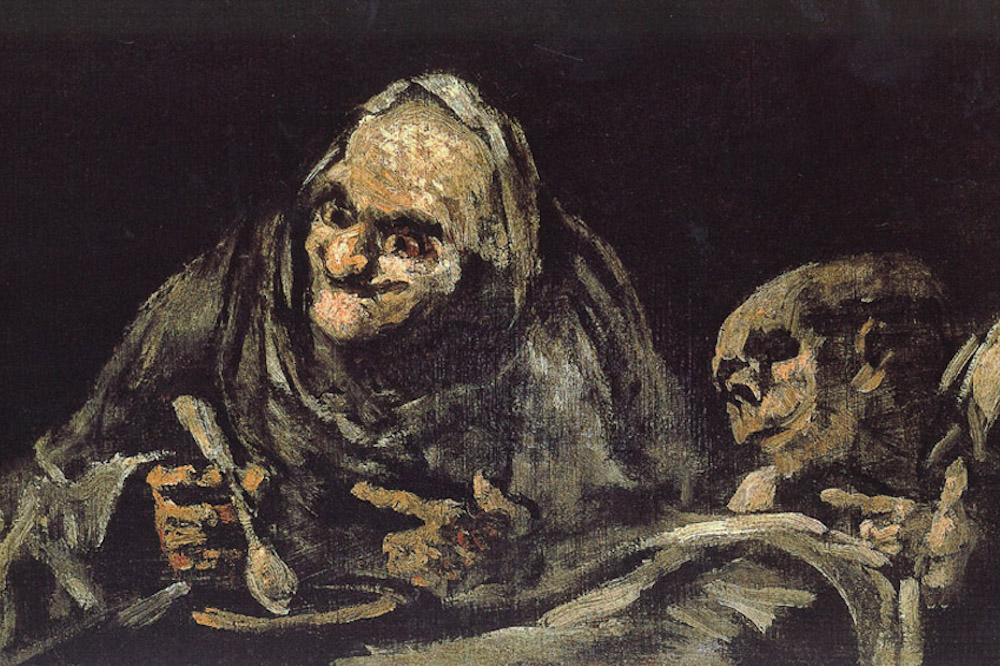









There is a trope among many a horror fan and creator that they have some primordial trauma lodged in their mind that fuels their particular predilictions of fear. Honestly, I find this sort of myth-making somewhat trite, if not bizarrely Fruedian, and it can be a subtle inhibitor on the creative expression of horror. Despite the implications of the genre's naming convention, horror is not and should not be a matter of simply recreating the same fear that one felt genuinely in childhood, because it can provide a much more expansive field for exploring the darker recesses of many complicated structures. The truth is, at least for me, that the genuine terror and anxiety I would experience as a naivé kid is no truer manifestation of fear than the sort of I fear I get from more intellectual horrors or, as philosopher Noël Carroll defines it, art horror.
What is the first thing I can remember ever scaring me? I had a one eyed one horned flying purple people eater doll that would sing its eponymous song and, for whatever reason, the thing terrified my five-year-old self. The main aspect that I can pinpoint as frightening would be it's jerky, mechanical movements, which spawned a recurring nightmare of an incomprehensibly large violet gremlin chasing my child self around the barren Earth. Eventually, my parents simply got rid of the thing, but they certainly had no problem teasing me about it for years to come. Perhaps to defy their expectations, I would spend the rest of my childhood indulging in gradually more disturbing content until I far surpassed my parents' relative tolerance for viscera and nightmares. One of my favorite films is David Lynch's Eraserhead, and I'd be lying if I said my first impulse to see it came from my parents' visible discomfort at its mention. Of course, this retrospective narrative can only explain so much, because I never really strayed outside of the realm of fiction for my thrills, and I would say that even the most gratuitous grindhouse flick has not desensitized me to the actual suffering of people and animals on shock sites. My motivations began as a shallow search for emotional vindication, but overtime I came to realize horror's unique property of contextualizing fear and turning it into deeper meaning.
I first got into creepypasta when I was in middle school, around the same time I discovered the work of H.P. Lovecraft, and many of my fond feelings fear both have entertwined over the years. I cannot precisley exhume the story that introduced me to the genre of creepypasta, but the candidates run the gamut from garbage to some all-time classics. Towards the former end, it's possible that Dead Bart, Squidward Suicide, or even Jeff the Killer ushered me into this lifelong fascination, which is a rather troubling notion in and of itself. Towards the latter end, Normal Porn for Normal People, Pale Luna, or Candle Cove, my favorite pasta, may have given me a taste of the true, robust potential of the format that invigorated my passion for horror. Creepypasta is designed for anonymity and an emphasis on verisimilitude, most do not follow the traditional POV of a third-person omniscent or even straight-forward first person narrator, instead obscuring the macabre through digital noise. Not every story does this, obviously, but the greater mechanisms of creepypasta create a certain mystique where any quantity of mediocre tales can easily entertain you on a dark night. It's not likely that you'll find a story that easily frightens me now, but that's really not what I'm looking for, what I sincerely value is a story that's compelling and thoughtful.
When creepypasta is successful, I believe it takes on a similar ethos to the kind of postmodern magical realism of Jorge Luis Borges, ascertaining a grander metatextual narrative without sacraficing the surface plot. A story like Candle Cove works so well because it can strike a balance between general and specific fear, alluding to vague and ominious ideas in order to call upon the phenomena of the reader's life, yet still providing enough concrete imagery and plot implications to intermingle with their mindscape. Did I picture that purple people eater among the crew of The Laughing Stock? Maybe, maybe not, but the suggestion certainly conjured up this notion of childhood anxiety. The spectacular and paranormal work best when they exist within the joints of reality, connecting together events that might otherwise have some rational explanation, else they overtake the unknown and become a new reality altogether.
Below are some disturbing horror images that I think have influenced my aesthetic ethos, so please puruse at your own risk.